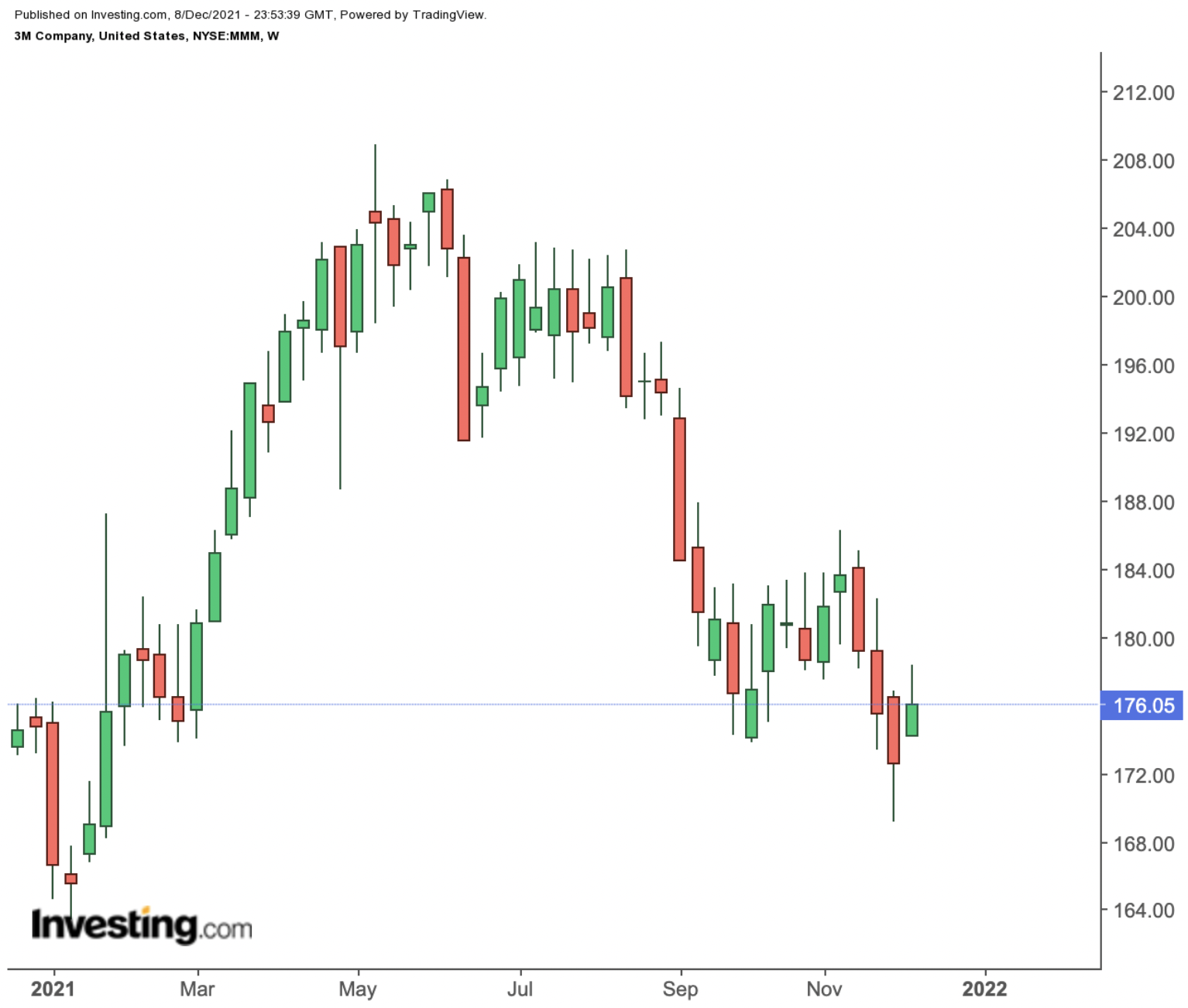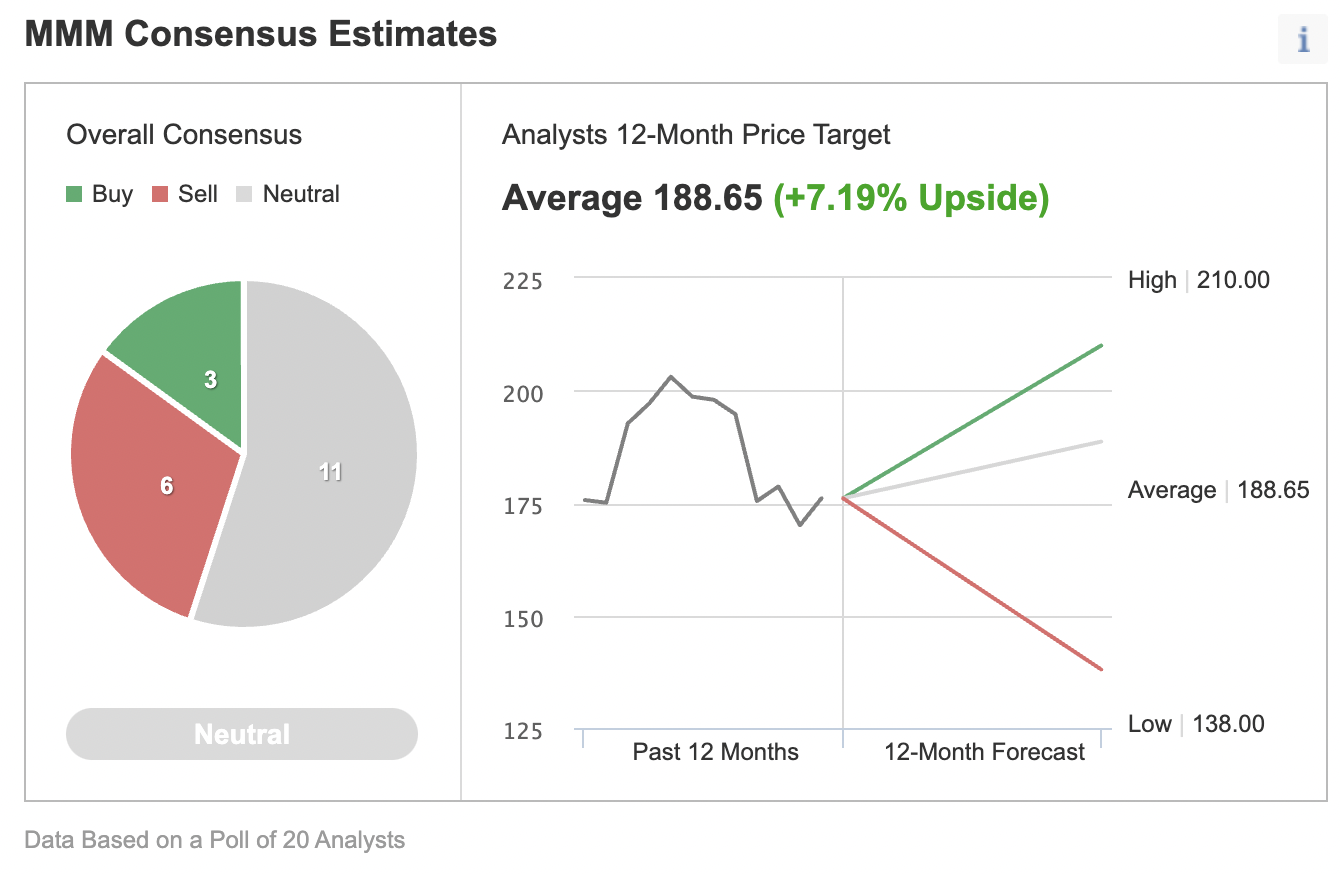3M Company (NYSE:MMM) shares have been underperforming this year, despite a powerful economic rebound after the pandemic increased demand for an array of products this industrial giant manufactures.

This mismatch between the underlying strength of the overall US economy and the reduced appetite investors are showing for the stock is surprising. Particularly since the St. Paul, Minnesota-based company has more than 60,000 product lines that include medical, industrial, and recognizable household brands. MMM products range from automotive repair patches to roofing granules to N-95 respirators to Nexcare bandages to Post-it® notes and Scotch® tape.
Shares have slumped about 15% since reaching a multi-year high in May. In the short run, this bearish spell is mainly driven by supply-chain bottlenecks that are impacting almost every industrial company and have resulted in a sharp escalation of the material costs.
In its Q3 results, 3M reported organic sales growth of 6.3%, with each of its industrial units posting a growth rate at a minimum in the mid-to-high single digits. But this performance lags the US multi-industrial sector, where growth has been about 10%. Analysts expect growth to slow significantly in 2022.
According to CFO Monish Patolawala, these pressures are short-term, and the company is seeing good end-market trends. In October, 3M cut its 2021 capital spending by almost 20%, but raised its organic growth forecast for the year, a sign that the demand backdrop still supports capacity expansions.
Consistent Underperformer
These headwinds related to supply and inflation, however, can’t provide justification for 3M shares’ consistent underperformance over the past five years—a period when its stock has hardly budged. During that time, Honeywell (NASDAQ:HON), a close rival, has seen its stock surge more than 80% with the Dow Jones Industrial Average producing similar gains.
According to a recent note by Credit Suisse, shares of 3M may continue to lag in the industrial sector until the company provides clarity about the impact of legal and environmental issues on its earnings.
The two issues facing 3M are potential costs related to its use of PFAS chemicals—certain types of which are known as forever chemicals because they accumulate in the body and break down slowly in the environment. 3M is also facing legal challenges from military service members and veterans who contend the company’s earplugs caused hearing loss.
The Credit Suisse note said:
“Despite fundamental potential upside from a cyclical upturn in global IP, and potential inventory restocking, we think it will be difficult for 3M to regain its premium multiple at this point in the cycle with two, still difficult to quantify liabilities.”
Another possible reason for investors’ indifference towards 3M stock is the company’s complex structure. This is becoming hard to justify at a time when many industrial giants are spinning off units in an effort to be leaner.
According to Bloomberg analysis, the company has four main divisions, but those house roughly two dozen sub-segments. 3M has done only one significant spinoff: the 1996 carve-out of its computer floppy disk and imaging products business. Its largest single divestiture was the $1-billion sale of its billboard operations in 1997.
These long-term structural issues, and the risk of unknown liabilities, have left very few proponents of the stock on Wall Street. Of 20 analysts surveyed in an Investing.com poll, the majority have a neutral rating on MMM.

Chart: Investing.com
One reason to own 3M in this very low interest-rate environment is the company’s attractive dividend and its long history of rewarding income focused investors. MMM offers an annual dividend yield of 3.34%, which translates to a quarterly payout of $1.48 a share.
Given the recent trend, however, investors should not expect massive dividend hikes going forward. 3M’s two latest raises were by 2% and 1%, respectively, hardly enough to cover the rate of inflation.
Bottom Line
3M stock, despite its vast industrial reach and income potential, doesn’t make a compelling investment case. The company is facing risk of unknown liabilities, while its complex manufacturing structure isn’t efficient enough to generate consistent high margins for shareholders.
